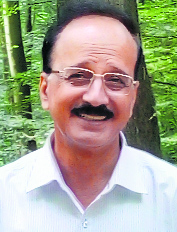
NEW DELHI: Swedish defence minister Peter Hultqvist on Tuesday made a pitch to sell SAAB’s Gripen fighter aircraft to India as New Delhi looks to acquire 114 fighter aircraft to replace its old fleet as well as make up the numbers in its depleting squadrons.
This is the second time a top Swedish government figure is pushing the Swedish made aircraft. Sweden’s Prime Minister Stefan Lofven had raised the matter with Prime Minister Narendra Modi in March during a virtual summit.
Swedish company SAAB is one of the handful of firms vying for the estimated ₹1.3 lakh crore tender to make the fighter jets in India. SAAB had previously promised to build a production line in India should New Delhi choose the Gripen, which is in contention with France’s Rafale, the American F/A-18 and F-21, MiG-35 and Sukhoi-35 of Russia and the Eurofighter Typhoon for the deal.
Addressing an event hosted by the Society of Indian Defence Manufacturers Hultqvist said that the Swedish government will continue to work with the Indian government to support increased exchanges, research and innovation between the defence industries of the two countries.
“The Make in India concept provides excellent opportunities for cooperation that would serve both our countries’ interests. The ongoing multirole fighter aircraft procurement where the Gripen fighter concept offered by SAAB is a good example of transfer of technologies and is supported 100% by the Swedish government,” Hultqvist said. He also noted that Swedish Prime Minister Lofven had conveyed the same message to Prime Minister Modi during their March meeting.
On his part, Indian Defence Minister Rajnath Singh pitched for more Swedish investment in India.
“FDI liberalization and improved ‘ease of doing businesses’ has already attracted top defence companies of the world and have Joint Ventures in India,” Singh said in his speech. “Further, the Government of India has allowed FDI up to 74% through automatic route and up to 100% through the government route wherever it is likely to result in access to modern technology,” he said.
Foreign original equipment manufacturers (OEMs) can set up manufacturing facilities individually or partner with Indian companies through a JV or technology agreement to capitalize on the ‘Make in India’ opportunity, the Indian minister said. “There is a lot of scope for Sweden and Indian defence Industries for co-production and co development. Indian industry can also supply components to Swedish Industries. Swedish firms such as SAAB already have a major presence in India and I am confident that other Swedish firms will find India as a major investment destination for Defence Manufacturing,” he said.
Highlighting India’s advantages — a substantial defence industrial base with 41 ordinance factories and nine defence public sector units, besides over 12,000 micro, small and medium enterprises — the minister said Indian companies had expertise in making a wide range of high tech defence systems for air, land, sea and space. India also had well-developed ship building capabilities, the minister said.
“I once again take this opportunity to invite Swedish firms to invest in the dedicated Defence Corridors of Uttar Pradesh and Tamil Nadu where they can benefit greatly from the unique incentives being offered by the State Governments and the availability of a highly-skilled workforce in India,” the minister added.
























































































































